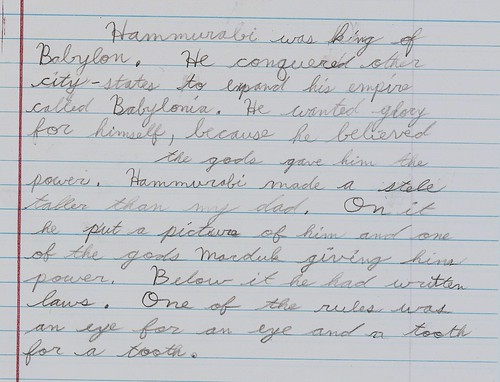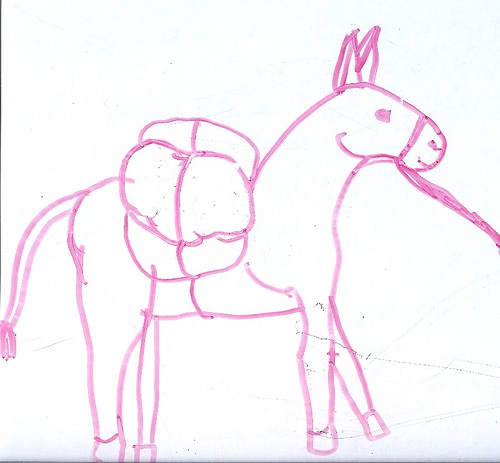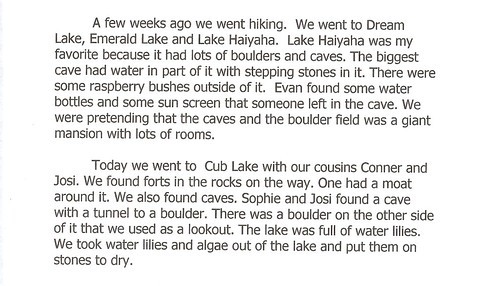On Thursday, I read aloud to the kids about Hammurabi from Story of the World and A Picturesque Tale. Mainly for Evan's sake, I read from The World in Ancient Times: Primary Sources and Reference Volume which used Hammurabi's Stele to discuss primary versus secondary sources and which used some of the laws and the epilogue to demonstrate how to draw conclusions about Hammurabi and his times.
In preparation for discussing Hammurabi, I had Googled "Code of Hammurabi and laws of Moses" and found these articles: #1, #2, #3 which I used to discuss the two sets of laws with the kids. (Since then I have found this article which is more succinct.) We also rehashed the discussion with James over our supper.
Here is Sophie's oral narration about Hammurabi which I wrote down and she copied today:

Speaking of Sophie, she drew this donkey (without a model) on a whiteboard while I read aloud:

She also drew this foal (looking at a calendar picture) on Friday morning:

But back to Hammurabi... I helped Evan to write down an outline for writing a narration about what we read and discussed and here is his summary:
Hammurabi and Moses
Hammurabi was the ruler of
Many laws in Hammurabi’s code are very similar to the laws of Moses. In the 1800’s, some scholars thought that the authors of the Bible made up the laws of Moses. Then a pillar with the Code of Hammurabi was found. They noticed that many of the laws were the same. Then the scholars thought that Moses had copied the laws from Hammurabi.
A different explanation can be found in Genesis 26:5 in the Bible which says that Abraham kept God’s commands and laws. Hammurabi might have lived at the same time that Abraham lived and knew some of God’s laws which ended up in his code. Moses didn’t copy from Hammurabi. He copied from God.
-------------------------------------------------------------------------------------------------
Matthew finished typing his letter today and told me that I could post part of it here:



3 comments:
We are about to read the chapter on Hammurabi- I feel like i've learned all I needed to know, I'm all ready for my son now. :)
Beautiful drawings, your daughter is quite talented.
Fascinating entry all around! I've always thought Hammurabi interesting. Of course, I didn't learn about him till college, and now it is great fun that even my young children can get a taste of real history and see how things do fit together and affirm scripture.
Sophie's art and handwriting are always a delight too! Thank you for sharing her skills! The donkey and horse are fantastic! (And maybe I should book her to come give lessons here to us!)
I am jealous to see all your good homeschooling work! I miss the education I was getting when I was teaching these humanities lessons to my young ones. Sophie is gifted. She draws what she sees, not just what she thinks she should see. She doesn't need to read Drawing on the Right Side of the Brain like some of the rest of us.
PS--I thought that I had posted a comment like this a day or two ago, but I can't find it. Forgive me if I repeat myself. :-)
Post a Comment